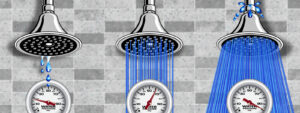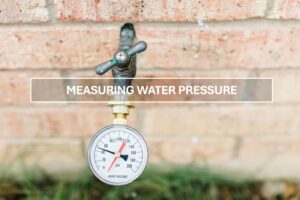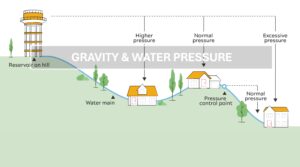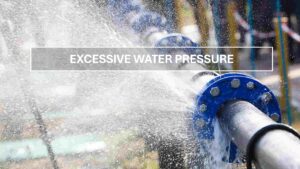Understanding Water Pressure
Updated: 08/2024
Residential Water Pressure Explained
Good water pressure is something most homeowners take for granted. There’s nothing worse than coming home from a hard day at work, looking forward to a nice shower, only to be met by trickling water due to low pressure. On the other hand, excessively high pressure can be a source of great stress and frustration. From joints to supply lines to faucets, damage can occur throughout the plumbing system; high pressure will also keep your water bill higher than it should be.

How Is Water Pressure Created?
Most residential areas receive their water from a municipal water provider or a private well or spring. Understanding how your water supplier gets your water to your home or business also needs to be considered. The LDWA’s water sorces are the Oak Grove Spring & Leeds Well. The water is collected into our water tanks and then gravity fed to our shareholders. The height of these tanks relative to the distribution area – along with the weight of the water – is what generates pressure. Simply stated, the higher the water tank, the greater the water pressure.
The pressurized water moves from the tank to the water main pipes that feed our LDWA community. Depending on the circumstances of the area, booster stations may be located throughout, which use pumps to maintain pressure in the distribution system. In areas where pressure becomes too high, pressure reducing stations transfer high-pressure water to low-pressure areas, maintaining manageable levels throughout the system.
What Should My Water Pressure Be?
Many factors influence the final water pressure you get in your home. The elevation of the building relative to both the height of the tank/tower and the location of the water main can make a significant difference, as can the size of the main and the number of homes connected to it. A service line (the pipe connecting the home to the main) not properly sized for the home’s needs can also affect the final pressure at the tap.
Residential water pressure tends to range between 45 and 80 psi (pounds per square inch). Anything below 40 psi is considered low and anything below 30 psi is considered too low; the minimum pressure required by most codes is 20 psi. Pressures above 80 psi are too high. Whereas low water pressure is more of a nuisance than a serious problem (some fixtures, like washing machines, have minimum pressure requirements), high water pressure carries with it a significantly increased risk of damage to pipes, joints, fixtures and seals – not to mention increased water waste. This is why many have installed pressure reducing or regulating valvues on the water line coming into their property to protect and entire their system from dangerous spikes in pressure or constant high pressure.
How Do You Measure and Correct Water Pressure?
Water pressure can be easily measured and monitored with a simple, inexpensive water pressure gauge that threads onto any hose bibb. These gauges feature an additional high-level indicator, which remains stuck at the highest pressure experienced until the gauge is reset. This type of gauge can let you know if you’re experiencing any spikes of high pressure, which can also cause problems.
To reduce high pressure in a home, you’ll need a Pressure Reducing Valve (PRV). In fact, these are often required by code for pressures beyond 80 psi. These devices do exactly what they say, reducing pressures of up to 400 psi down to a reasonable level of your choosing (most are factory set at 45 psi).
In Leeds, there are a lot of homes that were built before Pressure Reducing Valves were mandated. Your insurance company may very well cover some or all of the costs of the installation of these devices as ultimately this is a considerably cheaper option than paying out an insurance claim. Not to mention how inconvenient it is for a home owner to deal with the claim and repair process.
Note: A PRV is typically located on the main water supply line where it enters a home, after the main shut-off valve. In some cases this is outside the home and may be buried, commonly this is seen in older homes. More recently the practice is that the PRVs are located in the walls of the actual structure usually accessed through a panel or placed in a way that they are protected from the elements or vehicles possibly running over the boxes they are usually placed in under those cases.
If the residence being served by the PRV has a water heater, most codes require that an expansion tank be added to the water heater. This is because PRVs have an internal check valve that only allows water to flow one way, preventing water on the house-side of the PRV from going back the other way. This is a problem with water heaters because of thermal expansion (the expansion of water as it’s heated). In a non-PRV system, water is pushed back toward the main by increased pressure from the expansion. Since a PRV prevents that from happening, an expansion tank is necessary to accommodate the increased volume and pressure. Without the tank, pressure will build throughout the home plumbing system until a fixture is used, potentially leading to damage.
Not sure if you need a Pressure Reducing Valve installed?
Contact the LDWA and we will come out and test your pressure.



